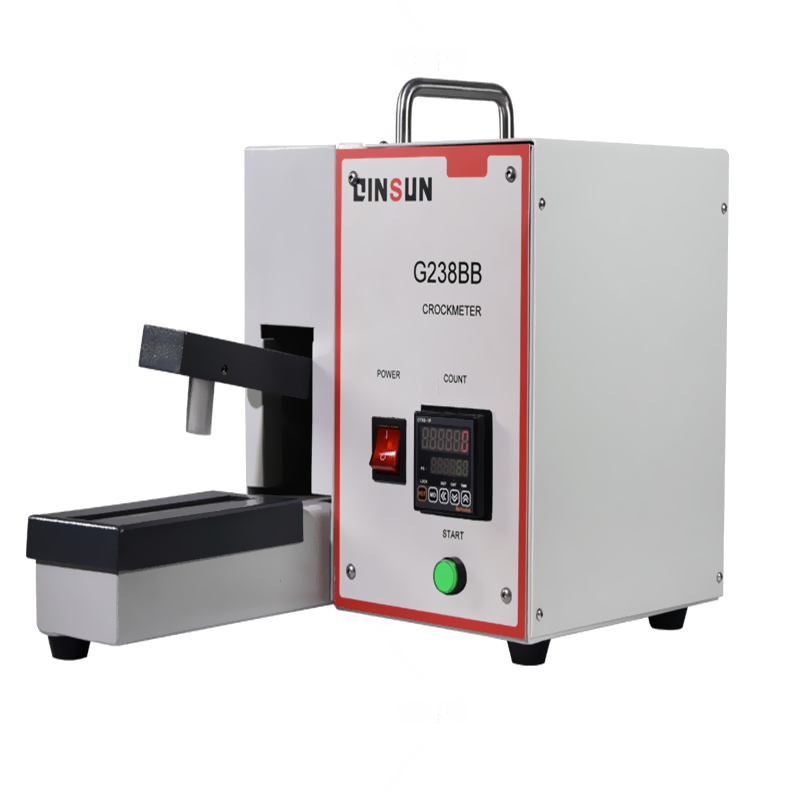Analysis of four methods of textile abrasion testing

Many products will have certain losses due to handling collision or friction. After a long time, they will fade, blur patterns, and surface wear. Therefore, it is necessary to conduct abrasion testing to understand the abrasion performance of the product and obtain information on reliability such as product wear resistance. Manufacturers can improve product materials or designs based on this information.
Shanghai Qianshi Precision Electromechanical Technology Co., Ltd. was established in 2012. It focuses on the research, development, design, and production of textile testing instruments, and provides textile testing instruments and services for academic research units and testing institutions. Shanghai Qianshi is currently one of the most competitive R&D textile testing instrument manufacturers in China. The R&D team is composed of a group of experienced engineers. We are committed to serving customers wholeheartedly and striving to promote technological innovation in textile testing instruments.
Our R&D technical engineer introduces four commonly used abrasion test methods in this article.
1. Linear reciprocating friction
Testing instrument:
Electric friction color fastness tester, used to detect the decolorization performance of dyed fabrics under friction in a dry/wet state.

Main parameters:
1. Friction head diameter: 16mm±0.1 or 25mm±0.1
2. Friction stroke: 104/100mm (adjustable)
3. Number of reciprocating motions in one test: 10 times
4. Friction speed: 60±1rpm/min
Applicable standards:
GB/T 3920-2008, ISO 105-X12, etc.
2. Rotational friction
Testing instrument:
Taber wears a tester, suitable for a wear test of leather, cloth, paint, paper, floor tiles, plywood, glass, plastic floor, natural rubber, and other materials.

Main parameters:
1. Test piece: outer diameter φ108mm, inner diameter φ6mm
2. Grinding wheel: φ2″(MAX.52mm)1/2″(W)
3. Grinding wheel center distance: 63.5mm
4. Grinding wheel and test piece center distance: 37~38mm
5. Rotation speed: 60/72 rpm
6. Load: 250g, 750g, 1000g
Applicable standards:
ASTM D1175, ASTM D1044, ASTM D4060, TAPPI T476, ISO 9352, ISO 5470-1, ASTM D3884, JIS K7204, JIS A1453, JIS K6902, JIS L1096, JIS K6964, DIN 52347, DIN 53109, DIN 53754, DIN 53799, etc.
3. Reciprocating friction
Testing instrument:
Taber5900 reciprocating abrasion tester, used to test the wear resistance of materials such as coatings, plastics, decorative fabrics, automotive interiors, velvet fabrics, etc.

Main parameters:
1. Stroke range: 6-120mm adjustable
2. Speed range: 1-100 reciprocating/min steplessly adjustable
Applicable standards:
ASTMF2495, F2496, GME60248, GME60368, GMW14125, ISO1518
4. Scratch resistance
Testing instrument:
Five-finger scratch tester, using the five-finger scratching method, tests the scratch resistance of various automotive interior and exterior materials.

Main parameters:
1. Stroke range: 10-200mm
2. Speed range: 10-200mm/s
3. Speed buffer: 10±1mm
4. Tungsten carbide scratch fingertips (5PCS): 1.0mm diameter spherical
5. Tungsten carbide scratch fingertips (5PCS): 7.0mm diameter spherical
6. Nine weight settings (2N, 3N, 4.5N, 5N, 6N, 7N, 10N, 15N, 20N)
7. Plastic scratch fingertips: polymethyl methacrylate (PMMA)
i . Diameter: 16mm; Thickness: 1mm
ii. The radius of the scraping finger edge is 0.5mm
iii. The hardness is shoreD85
Applicable standards:
FordBN108-13, GeneralMotorsGMN3943, Danmler-ChryslerLP-463DD-18-01, GB2918, GB6151, GB8424.3, BMWGS97034, STD1024-3113, GMW14688, GMW14698-A
2024-11-28 11:23




